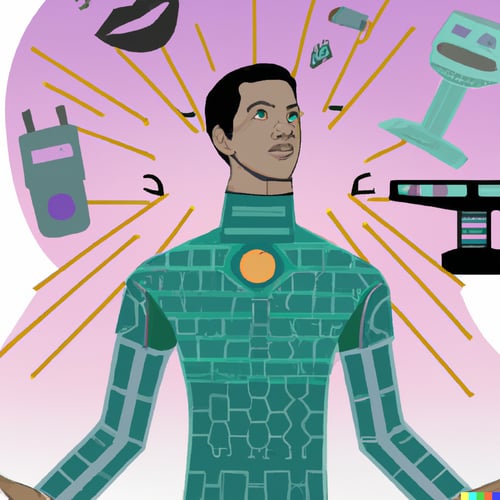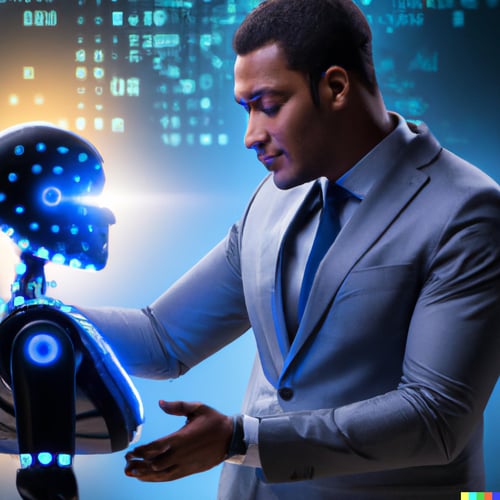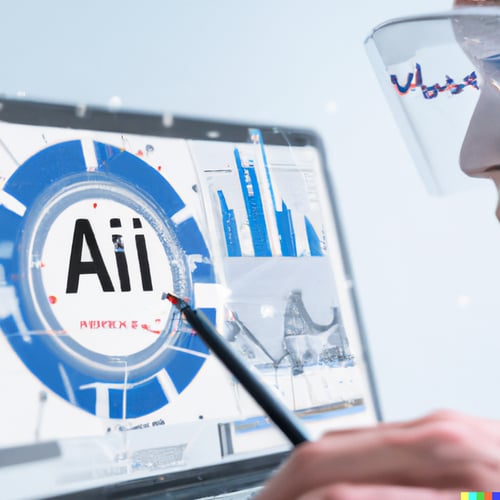The real democratization of AI, and why it has to be closely monitored
In recent years, the topic of AI democratization has gained a lot of attention. But what does it really mean, and why is it important? And most importantly, how can we make sure that the democratization of AI is safe and responsible? In this blog post, we'll explore the concept of AI democratization, how it has evolved, and why it's crucial to closely monitor and manage its use to ensure that it is safe and responsible.
What AI democratization used to be
In the past, AI democratization was primarily associated with "Auto ML" companies and tools. These promised to allow anyone, regardless of their technical knowledge, to build their own AI models. While this may have seemed like a democratization of AI, the reality was that these tools often resulted in mediocre results at best. Most companies realized that to truly derive value from AI, they needed teams of knowledgeable professionals who understood how to build and optimize models.
The real democratization of AI

Dall-E 2 when prompted “An average Joe using AI to rule the world”
The rise of generative multi-purpose AI, such as ChatGPT and image generators like Dall-E 2, has brought about a true democratization of AI. These tools allow anyone to use AI for a wide range of purposes, from quickly accessing information to generating content and assisting with coding and translation. In fact, the release of ChatGPT has been referred to by Google as a "code red", as it has the potential to disrupt the entire search business model.
The dangers of AI democracy

Dall-E 2 when prompted “An average Joe using AI to destroy the world”
While the democratization of AI through tools like ChatGPT and Dall-E 2 is a game changer, it also comes with its own set of dangers. Much like in a real democracy, the empowerment of the general public carries with it certain risks that must be mitigated. OpenAI has already taken steps to address these dangers by blocking prompts with inappropriate or violent content for ChatGPT and Dall-E 2. However, businesses that rely on these tools must also ensure that they can trust them to produce the desired results. This means that each business must be responsible for its own use of these general-purpose AI tools, and may need to implement additional safeguards to ensure that they align with the company's values and needs. Just as a real democracy has protections in place to prevent the abuse of power, businesses must also put mechanisms in place to protect against the potential dangers of AI democratization.
So who’s responsible?

Dall-E 2 when prompted “Responsible artificial intelligence doing business”
Given the significant impact that AI can have on a business, it's important that each business takes responsibility for its own use of AI. This means carefully considering how AI is used within the organization, and implementing safeguards to ensure that it is used ethically and responsibly. In addition, businesses may need to customize the use of general-purpose AI tools like ChatGPT to ensure that they align with the company's values and needs. For example, a company that builds a chatGPT-based coding assistant for its internal team may want to ensure that it adheres to the company's specific coding styles and playbooks. Similarly, a company that uses chatGPT to generate automated email responses may have specific guidelines for addressing customers or other recipients.
It may be the case that, for a particular business, the types of outputs that are deemed appropriate or not are different from those that OpenAI considers inappropriate. In this case, it could be argued that OpenAI should make the blocking of inappropriate content and prompts optional or parametrized, allowing businesses to decide what to use and what not to use. Ultimately, it is the responsibility of each business to ensure that its use of AI aligns with its values and needs.
So what can be done?
 Dall-E 2 when prompted “Responsible human uses tools to monitor AI ”
Dall-E 2 when prompted “Responsible human uses tools to monitor AI ”
In the past few years, a new industry of AI monitoring has emerged. Many of these companies were initially focused on "model monitoring," or the monitoring of the technical aspects of AI models. However, it's now clear that this approach is too limited. A model is just one part of an AI-based system, and to truly understand and monitor AI within a business, it's necessary to understand and monitor the entire business process in which the model operates.
This approach must now be extended to serve teams that utilize AI without actually building the model, and that often have no access to the model at all. To do this, AI monitoring tools must be designed for users who are not necessarily data scientists and must be flexible enough to allow monitoring of all the different business use cases that may arise. These tools must also be smart enough to identify places where AI is operating in unintended ways.
